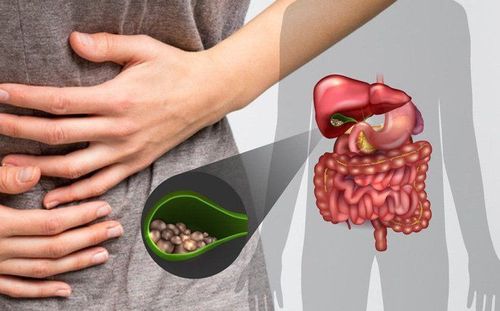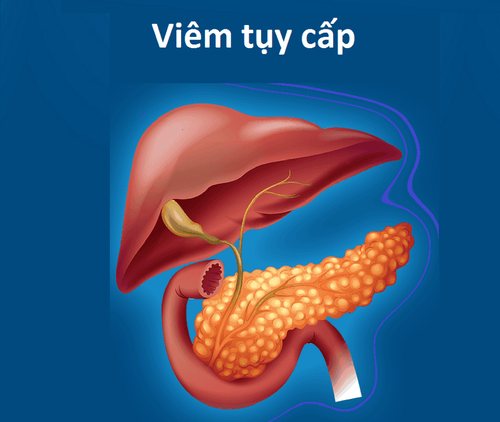This is an automatically translated article.
The article is professionally consulted by Master, Doctor Nguyen Ngoc Thang - Gastroenterologist - General Surgery Department - Vinmec Danang International General Hospital.In abdominal surgical emergency, hepatobiliary emergency ranks second, mainly complications of gallstones. The emergency complication of gallstones is considered a very difficult disease, especially in terms of management, with many complicated disorders caused by gallstones, including common bile duct stones.
1. What are common bile duct stones?
Gallstone disease is a disease caused by stones (small or large, muddy) located in the lumen of the bile duct (in the liver or outside the liver, gallbladder). Extrahepatic bile duct stones, in addition to gallstones, there are common bile duct stones.2. Causes of common bile duct stones
Common bile duct stones can be primary stones, arising in the biliary tract due to bacteria in bile from the digestive tract, or secondary stones originating from the gallbladder.Regarding the causes of gallstones from the gallbladder, at present, scientists have not found an exact and clear cause of gallstones, doctors think that gallstones can occur when:
Ingredients Bile juice contains too much cholesterol. Normally, your bile contains enough chemicals to dissolve cholesterol that is eliminated by the liver. But if your liver excretes more cholesterol than your bile can dissolve, the excess cholesterol will form crystals and eventually stones. Bile contains too much bilirubin. Bilirubin is a compound made when your body breaks down red blood cells. Some diseases cause your liver to make too much bilirubin such as cirrhosis, biliary tract infections, and some blood disorders. Excess bilirubin contributes to the formation of gallstones. Your gallbladder is not completely empty. If your gallbladder doesn't empty completely or there's a lot of bile in your gallbladder on a regular basis, the bile can become concentrated, contributing to the formation of gallstones.
3. Symptoms of common bile duct stones

Sau đau do sỏi ống mật chủ thường có sốt, xuất hiện sốt nóng và rét run
4. Who is at risk for common bile duct stones?
Factors that may increase the risk of common bile duct gallstones include:Being female 40 years of age or older Being Native American Being Mexican-American Being overweight or obese Being sedentary Pregnant Using a diet high in fat Eat a lot of cholesterol Eat less fiber Have a family history of gallstones Have diabetes Have certain blood disorders, such as sickle cell anemia or leukemia Lose weight very quickly Take medications that can contain estrogen, such as birth control pills or hormone therapy drugs Have liver disease
5. Complications of common bile duct stones

Sỏi ống mật chủ thường gây ra bệnh cảnh nhiễm trùng đường mật cấp
Gallbladder cancer . People with a history of gallstones have an increased risk of gallbladder cancer. But gallbladder cancer is very rare, so despite the increased risk of cancer, the chance of gallbladder cancer is still very small.
6. Prevention of common bile duct stones
You can reduce your risk of common bile duct stones in the following ways:Do not skip meals. Try to eat at the right time and have enough meals each day because skipping meals or fasting can increase the risk of gallstones. Lose weight slowly. If you need to lose weight, do it slowly. Rapid weight loss can increase the risk of gallstones. Therefore, you should aim to lose about 0.5 to 1 kg per week. Eat plenty of high-fiber foods in your diet, such as fruits, vegetables, and whole grains. Maintain a healthy weight. Obesity and being overweight increase the risk of gallstones. Diet and exercise to achieve a healthy weight by reducing calorie intake and increasing physical activity. Once you reach a healthy weight, work to maintain that weight by continuing a healthy diet and continuing to exercise. Patients should see a doctor at Vinmec International General Hospital when they see symptoms of suspicion of common bile duct stones. Vinmec regularly plans to cooperate in technology transfer and exchange of expertise with medical centers in countries with advanced medicine such as Japan, France, USA, Singapore, etc. The earliest medical advances in the world in examination and treatment.
In particular, laparoscopic surgery to remove common bile duct stones with Kehr drainage at the hospital will help patients get rid of the disease gently and quickly recover health, with the following advantages:
Success rate up to 95% of modern international standard surgical equipment including Avance CS2 anesthesia machine, GE's R860 ventilator and Master Endoscope. Doctor Nguyen Ngoc Thang has 17 years of experience in the field of gastrointestinal and hepatobiliary surgery, and over 9 years of endoscopic interventional experience, especially the technique of endoscopic retrograde cholangiopancreatography. ERCP) with over 800 cases.
Please dial HOTLINE for more information or register for an appointment HERE. Download MyVinmec app to make appointments faster and to manage your bookings easily.
Article referenced source: Mayoclinic.org












